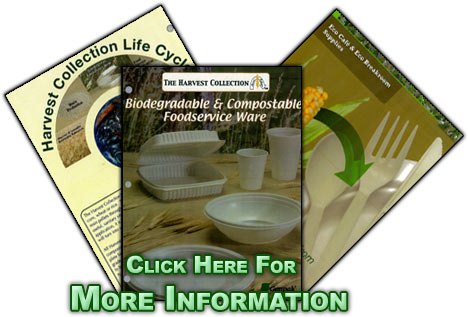Operations and Energy Management
| Lighting | Vehicles | Food | Cleaning | Chillers |
Energy Efficient Lighting
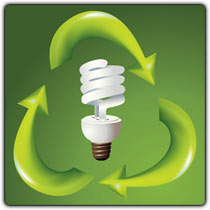 Milwaukee Area Technical College is in the process of updating its lighting.
Milwaukee Area Technical College is in the process of updating its lighting.
MATC is switching from T-12 to T-8 lighting in some cases.
The Downtown Gym is being converted to T-8.
MATC is implementing T-5 in areas of the Downtown Health Building.
Finally MATC is implementing LED lighting in the 8th Street Parking.
In an effort to reduce lighting energy costs, T8 fluorescent lamps with electronic ballast have quickly become the standard for new fixtures and retrofits in commercial office buildings, schools, and a substantial portion of industrial lighting.
A typical conversion of T12 fixtures with magnetic ballast to T8 fixtures with electronic ballast costs about $20 per lamp including parts and labor. Energy savings from the conversion can pay back the initial investment in two to three years in an industrial application, and five to seven years in a commercial application.

Typical indicator LEDs are designed to operate with no more than 30-60 milliwatts (mW) of electrical power. Around 1999, Philips Lumileds introduced power LEDs capable of continuous use at one watt (W). These LEDs used much larger semiconductor die sizes to handle the large power inputs. Also, the semiconductor dies were mounted onto metal slugs to allow for heat removal from the LED die.
One of the key advantages of LED-based lighting is its high efficiency, as measured by its light output per unit power input. White LEDs quickly matched and overtook the efficiency of standard incandescent lighting systems. In 2002, Lumileds made five-watt LEDs available with a luminous efficiency of 18-22 lumens per watt (lm/W). For comparison, a conventional 60-100 W incandescent lightbulb produces around 15 lm/W, and standard fluorescent lights produce up to 100 lm/W. (The luminous efficiency article discusses these comparisons in more detail.)
For more information about LIGHTING EFFICIENCY, click here!
Emphasis is placed on cost-effective energy options, direct digital controls, energy management systems, sustainable operations management, maintenance management, commissioning and project management. Additional attention is placed on saving operations and maintenance dollars by introducing developments in the energy industry, contracting options for services and best practices in efficient and effective operations and maintenance. Monitoring, control, reporting and presenting sustainability performance is given full treatment. Supervision, management and training of building service employees are also covered. LEED certification as well as renewable energy are given full treatment as part of this program.
( Return to Top )
Hybrid Vehicles
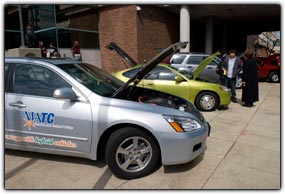 MATC purchased its first Hybrid three years ago. This was a Ford Escape, which is a gasoline–battery vehicle. Since the first vehicle, MATC has acquired a Ford Escape hybrid for each additional campus. These vehicles are used for travel between campus and for trips outside of Milwaukee. All employees are encouraged to use these vehicles when ever possible.
MATC purchased its first Hybrid three years ago. This was a Ford Escape, which is a gasoline–battery vehicle. Since the first vehicle, MATC has acquired a Ford Escape hybrid for each additional campus. These vehicles are used for travel between campus and for trips outside of Milwaukee. All employees are encouraged to use these vehicles when ever possible.
MATC also has a Honda Accord Hybrid that is used by public safety and maintenance on the Mequon Campus.
MATC Athletics is acquiring an E-85 dual fuel vehicle for transporting athletes to events. E-85 fuel vehicles use fuel made from renewable sources. The E-85 vehicle is the most sustainable vehicle currently available for the intended purpose of moving a number of individuals over greater distances.
( Return to Top )
Food Service Products
Milwaukee Area Technical College was the first organization in Milwaukee to use Eco supplies in its food service. MATC has plates made of corn product, bowls made of spent sugar cane fiber and cutlery made of potato by product. These entire product de compose in the land fill in 60 to 120 days. Unlike petroleum base products which will last over 500 years.
( Return to Top )
Cleaning Products
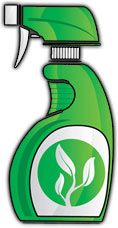 Milwaukee Area Technical College has switched to cleaning products that are Green Seal Certified:
Milwaukee Area Technical College has switched to cleaning products that are Green Seal Certified:
Green Seal bases its work on thorough, state-of-the-art scientific evaluations using internationally accepted methodologies. Product evaluations are conducted using a life-cycle approach to ensure that all significant environmental impacts of a product are considered, from raw materials extraction through manufacturing to use and disposal. Wherever possible, Green Seal standards cite international test methods for evaluating product performance or environmental attributes such as toxicity, and its procedures conform to international standards for ecolabelling.
In developing environmental standards and certifying products, Green Seal follows the Guiding Principles and Procedures for Type I Environmental Labeling adopted by the International Organization for Standardization (ISO 14024). Green Seal has played an important role in helping to shape policy at the national and international levels in the practice and use of ecolabeling and environmental product standards. We were instrumental in the development of ecolabelling policy standards of the International Organization for Standardization (ISO) under the ISO 14000 environmental management series. ISO standards are intended to harmonize standard-setting activities and to avoid international disagreements. Learn more about Green Seal's environmental standards.
( Return to Top )
Chillers
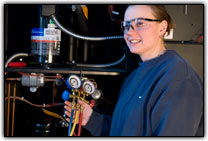 Milwaukee Area Technical College is converting its old style air conditioning unit with new state of the art York Chillers. These are high efficiency (use less energy) and use environmentally friendly coolant.
Milwaukee Area Technical College is converting its old style air conditioning unit with new state of the art York Chillers. These are high efficiency (use less energy) and use environmentally friendly coolant.
The installation includes new, more efficient cooling towers and variable speed pumps. All of this reduces energy consumption.
To date, two chillers downtown and the one on the Oak Creek campus have been replaced.
Mequon and West Allis chillers will be upgraded during the next two to three years.
( Return to Top )
 To stay up to date about the program and MATC's continued effort to go GREEN, please enter your email address below.
To stay up to date about the program and MATC's continued effort to go GREEN, please enter your email address below.

